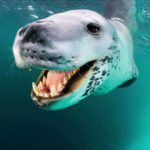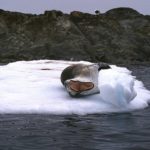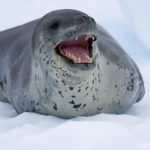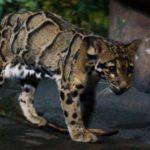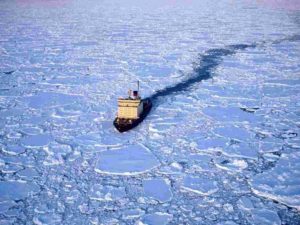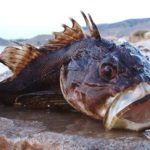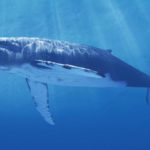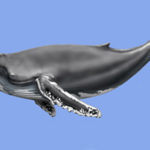Sea Leopard – Description and lifestyle
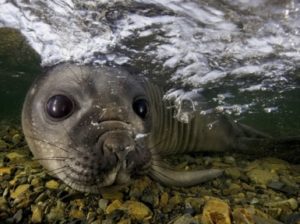 Sea leopard – refers to the species of real seals living in the subantarctic regions of the Southern Ocean. It is one of the most formidable and dangerous marine predators. He was called a leopard for his skin covered with spots, and also because of predatory behavior – he is also ferocious and dangerous to other marine animals. There is a sea leopard along the entire perimeter of the Antarctic ice, delivering along with the killer whale a lot of concern to its more peaceful inhabitants.
Sea leopard – refers to the species of real seals living in the subantarctic regions of the Southern Ocean. It is one of the most formidable and dangerous marine predators. He was called a leopard for his skin covered with spots, and also because of predatory behavior – he is also ferocious and dangerous to other marine animals. There is a sea leopard along the entire perimeter of the Antarctic ice, delivering along with the killer whale a lot of concern to its more peaceful inhabitants.
Antarctica is the sixth continent or white desert. Almost all 14 million square kilometers are covered in ice so that you can’t hide and find food. In summer, water is filled with life here. A huge mass of plankton, to a greater extent krill – zufazid sea crustacean, more than 250 types of sponges – some of which are the size of a diver, sea urchins and stars, octopuses, worms, jellyfish weighing one and a half centners.
Such a “menu” attracts many different eaters to Antarctica – sea animals, birds and fish. The most respectable visitors are the baleen whales: saivals, humpbacks, finials and blue whales. Satisfied with the generous catch – all fish, shellfish, crustaceans. But there is an animal in the family of pinnipeds that has expanded the scope of the traditional diet of its brethren. He is the sea leopard.
This predatory spotted seal arranges a tireless hunt for penguins and other warm-blooded representatives of the fauna. At the same time, without giving up corpses of pinnipeds and whales, he eats squids, fish and even krill with pleasure.
A sea leopard has a streamlined body that allows it to develop high speed in water. His head is unusually flattened and looks almost like a reptile, his mouth has two rows of powerful teeth with fangs. The animal has virtually no subcutaneous fat.
A male sea leopard is about three meters long and 300 kilograms in weight – and the weight of a female sea leopard can reach half a ton. Catching up prey, the leopard is capable of speeds up to 40 km / h. Due to the streamlined shape of the body, this seal resembles a torpedo, which contributes to movement at high speed. The front fins reach a meter and, working synchronously, carry the body forward. A long flexible neck holds a flattened head resembling a snake. The huge mouth has powerful jaws and huge teeth. Here is such a portrait of a killer seal.
A distinctive feature of the sea leopard is that it does not suit collective rookeries, but prefers proud loneliness.
When summer begins in Antarctica, sea leopards head closer to the feed – penguin colonies. There are two ways to hunt these pinnipeds. When penguins swim near an ice floe or the mainland and are easily able to jump out of the water, a sea leopard approaches them underwater from afar and without noise. Without surfacing, he drags the prey down. Another thing is when the penguins are in large water, far from the coast. Swim to the birds under water, a seal suddenly emerges nearby. In confusion, most birds jump out, and a few in confusion freeze in front of the muzzle itself. The predator directly enjoys the effect. Having recovered, the birds flee, and distributing hoarse cries, they try to hide. Behind them, as a torpedo slices through the water, a sea leopard rushes. And with the last jump catches up with the runaways. Soon, everything calms down.
When hunting for seals, the sea leopard also hides under the water. Plunging to a depth of 300 meters, he is able to stay there for about ten minutes, retaining oxygen in his muscles and blood. During diving, the force of water pressure compresses the animal’s nostrils, and when the mouth is opened to capture prey, the soft palate and tongue close the back wall of the pharynx, preventing water from entering the lungs. If the attack in the water failed, then he can continue the pursuit on land, but not for long. In the aquatic environment it is easier for him, there is his element.
The danger of the sea leopard is also for people. There have been cases of attacks on boats. The pinnipeds jumped out of the water and tried to grab the man by the leg. Christy Brown in 2003 became a victim during a polar expedition. The sea leopard, while immersing the researcher, grabbed her leg with her teeth and pulled her to a depth of 70 meters, the woman suffocated. Aggressive behavior developed in the animal during evolution, the habit of attacking any potential prey.

